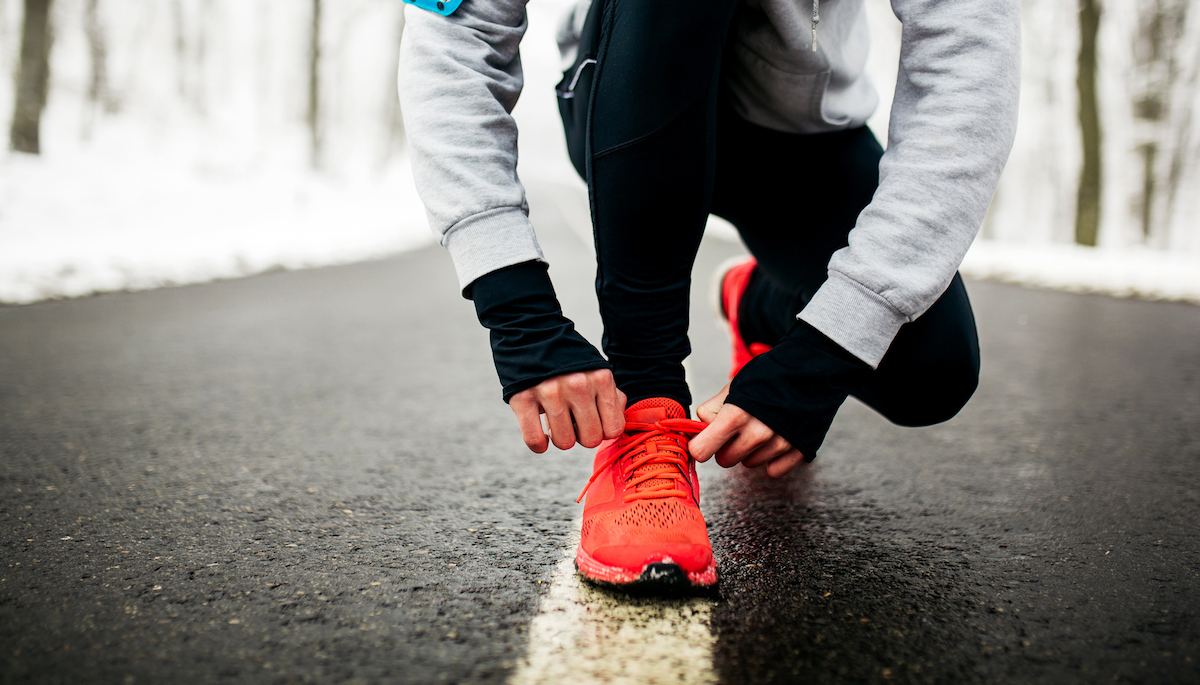<< Back
Winter Fitness: Safety Tips When Exercising Outdoors

December 06, 2021
By Sari Oliver
Physical Therapist
Hartford HealthCare Rehabilitation Network
Don’t let the cold weather keep you inside and stop your fitness routine. You may hesitate to exercise in the cold winter months, but it’s generally safe if you take certain precautions.
Winter workout advantages:
- Exposure to sunlight which could help protect you from seasonal affective disorder.
- May improve endurance.
- Exercising in cold weather can transform white fat – specifically belly and thigh fat, into calorie-burning brown fat.
- Burn more calories outside compared to indoors because your body is working harder to regular its core temperature.
Here are a few safety tips before heading outside:
- Wear layers: Base layer should contain synthetic material (such as polypropylene) which draws sweat away from your body. Avoid cotton as it will absorb sweat and make you colder.
- Be sure to cover your head, face, legs, feet, and hands as these areas are at greater risk for injury.
- Apply sunscreen, especially if there is snow on the ground. Sun can reflect off of the snow onto your skin.
- Wear heavy socks and a wool cap, and protect your eyes from wind and glare with dark glasses.
- Stay hydrated: You are more likely to get dehydrated in cold weather because cold air tamps down thirst.
- Choose a safe surface: Sometimes the ground can freeze and make it dangerous to walk so make sure either the ground is smooth or you have proper footwear.
- Warm up prior to exercise with dynamic stretching because cold muscles are at a greater risk for strains and injury.
- Avoid exercise in temperatures less than minus-8 degrees because tissue injury can occur in 30 minutes or less in these conditions.
- Map your route: Plan the trails or paths that you will take so you do not get lost.
Be mindful of symptoms (and risk of hypothermia) when exercising on a cold day:
- Cold hands and feet.
- Mild shivering.
- Areas exposed to the environment appear red or become painful.
- Dehydration.
- Decreased ability to perform tasks with hands due to loss of feeling from the cold.
Exercising in the cold can cause bronchoconstriction, which can make it harder to breathe. This is something many people deal with when beginning cold weather exercise each year – even without any pulmonary problems such as COPD and asthma. Bronchoconstriction is a condition in which the smooth muscles of the bronchus contracts. The bronchus is the pathway that moves air to and from your lungs. The muscle contraction causes the bronchus to narrow and restrict the amount of air passing into and out of your lungs.
If you experience this, try pursed-lip breathing, taking a break from exercise, or decreasing your intensity can help combat these symptoms. A scarf or mask can be used over your nose/mouth, so the air you are breathing is a little warmer and not as harsh to the overall system. In addition, warming up is very important and make sure you have a rescue inhaler available in case needed.
Ask your doctor before starting exercise routine in the cold, especially if you have pulmonary conditions. Keep a rescue inhaler available if needed.
Sari Oliver is a Physical Therapist with Hartford HealthCare Rehabilitation Network.